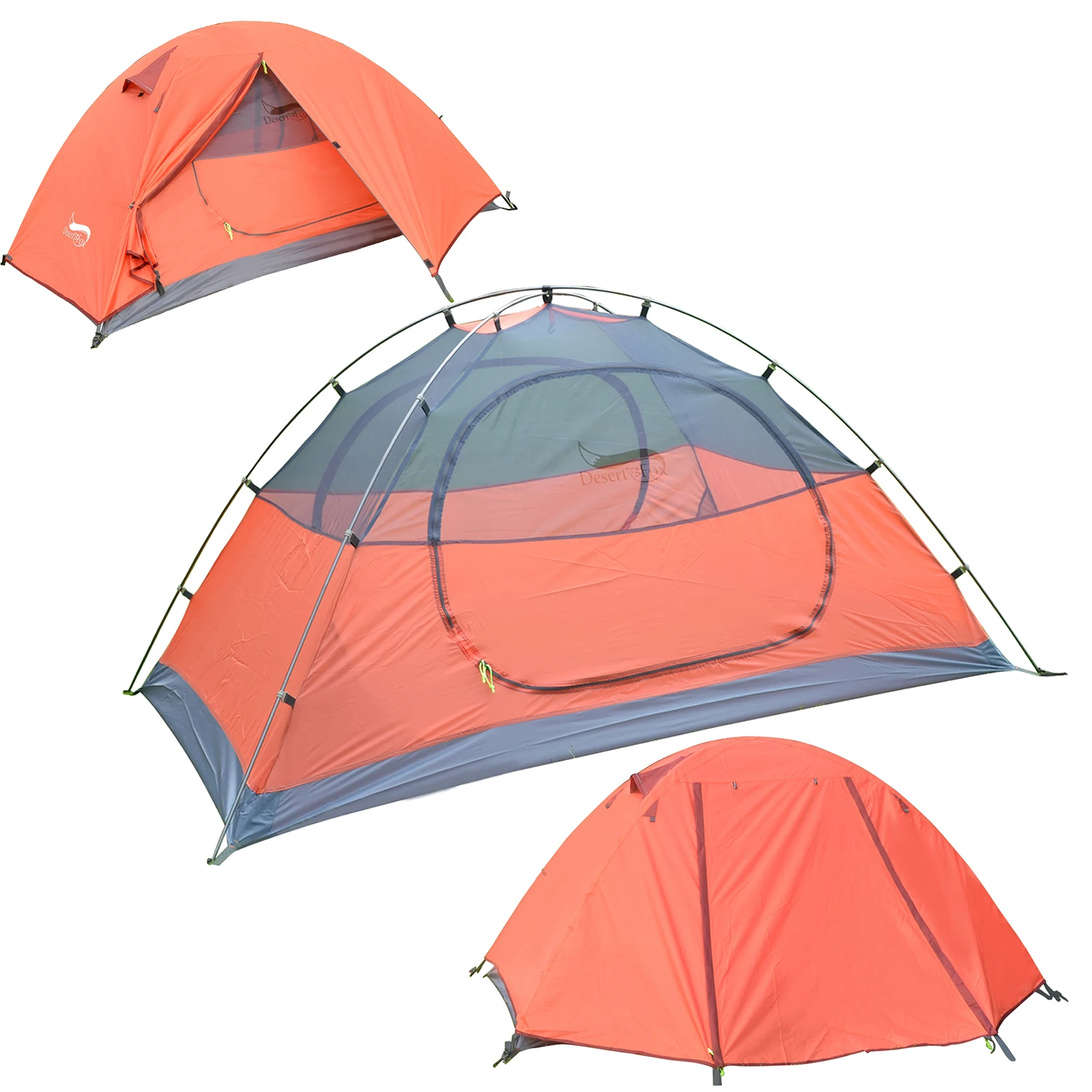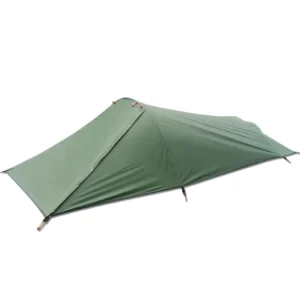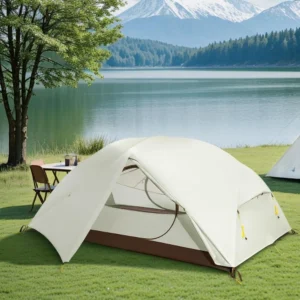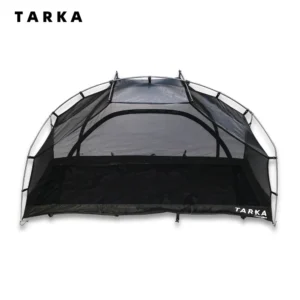I. Introduction: Why Waterproof Protection Matters for Backpackers
When you’re miles from shelter on a backcountry trail, few things can ruin an adventure faster than water seeping through your gear. Proper waterproofing isn’t just about comfort—it’s about safety and survival. Wet sleeping bags lose insulation properties, increasing hypothermia risk even in moderate temperatures. Soaked electronics fail, navigational tools become unreliable, and cotton clothing becomes dangerously cold against your skin.
Understanding what “waterproof” actually means is critical. Many backpackers don’t realize there’s a significant difference between water-resistant (can handle light moisture) and truly waterproof (designed to keep water out under sustained pressure). This distinction becomes painfully clear when a water-resistant jacket begins to soak through during hour three of an all-day downpour.
It’s also important to set realistic expectations. No gear remains 100% waterproof forever under all conditions. Even the highest-quality equipment has limits and requires maintenance to perform optimally. Waterproofing is best understood as a spectrum rather than an absolute state, which is why ratings exist to help us make informed decisions for our specific outdoor needs.
For backpackers seeking reliable protection in unpredictable conditions, understanding comprehensive ultimate guide waterproof gear backpackers concepts makes the difference between a challenging-but-enjoyable trek and a miserable (or potentially dangerous) experience.
II. Decoding the Hydrostatic Head Test: The Science Behind Waterproof Ratings
The Hydrostatic Head (HH) test stands as the industry standard for measuring waterproof performance. In its simplest form, this test involves placing a tube filled with water on top of a fabric sample and measuring how tall the water column can get before water begins seeping through the material. The higher the water column before leakage occurs, the more waterproof the fabric.
This measurement directly correlates to real-world performance. When you kneel on wet ground, you apply pressure that forces water through the fabric of your pants. Similarly, when rain hits your tent fly, it creates pressure—and heavier rain creates more pressure. Shoulder straps on a backpack press rainwater against the fabric with significantly more force than the rain alone. The hydrostatic head rating tells you how much of this pressure your gear can withstand before failing.
The measurement is typically expressed in millimeters (mm), representing the height of the water column. For context, light rain creates roughly 1,000-2,000mm of pressure, while kneeling on wet ground can create over 10,000mm of pressure at the point of contact. Some manufacturers use pounds per square inch (PSI) instead—a 10,000mm rating converts to roughly 14.2 PSI.
The materials used waterproof hiking gear vary widely in their construction and performance capabilities, affecting how they respond to this testing method and how they’ll perform when you’re miles from shelter in deteriorating weather.
III. Waterproof Rating Scale: What the Numbers Mean for Backpackers
Understanding waterproof ratings empowers you to select gear appropriate for your specific adventures. Here’s how to interpret these critical numbers:
0-1,500mm: Water-Resistant (Not Waterproof)
These materials can handle light mist or brief drizzle but quickly surrender to actual rainfall. Fabrics in this range may have a basic DWR treatment but lack a waterproof membrane. They’re suitable only for activities with minimal precipitation risk or as an emergency backup layer.
1,500-5,000mm: Basic Rain Protection
This range offers legitimate but limited waterproofing. At 3,000-5,000mm, a rain jacket will handle a typical shower for about 30-60 minutes before moisture begins working through—especially at stress points like shoulders and hips. This level works for day hikers in moderate conditions but isn’t sufficient for extended precipitation exposure.
5,000-10,000mm: Standard Backpacking Quality
This represents the sweet spot for most three-season backpackers. A 10,000mm tent fly will keep you dry through sustained overnight rain, while a 10,000mm rain jacket provides reliable protection for most on-trail scenarios. This level handles everything except the most extreme conditions.
10,000-20,000mm: High-Performance Protection
Serious backcountry adventurers who anticipate challenging weather should look to this range. These ratings withstand driving rain, wet snow, and significant external pressure (like wind pressing rain against a tent wall or a heavy pack pushing against a rain jacket). Multi-day trips in rainy regions warrant this level of protection.
20,000mm+: Extreme Condition Protection
These ratings are found in expedition-grade equipment designed for the harshest environments. Winter mountaineering, extended trips in notoriously wet climates like the Pacific Northwest or New Zealand, and scenarios where failure isn’t an option call for these premium protection levels.
The question of is 3000mm waterproof enough depends entirely on your activities. For light summer hiking with occasional showers, it might suffice. For backpacking through Scotland in autumn, you’d likely find it woefully inadequate.
IV. Waterproof Ratings Comparison Chart by Gear Type
Different equipment faces different water exposure challenges. A tent floor endures consistent ground contact pressure, while a rain jacket must withstand driving precipitation but benefits from gravity helping water run off. Here’s a quick reference guide for minimum recommended ratings by gear type and conditions:
| Gear Type | Light Rain | Sustained Rain | Heavy/Wind-Driven | Snow/Winter |
|---|---|---|---|---|
| Rain Jacket | 5,000mm | 10,000mm | 15,000mm+ | 20,000mm+ |
| Tent Flysheet | 1,200mm | 2,000mm | 3,000mm+ | 4,000mm+ |
| Tent Floor | 2,000mm | 3,000mm | 5,000mm+ | 10,000mm+ |
| Backpack | 1,000mm | 2,000mm | 3,000mm+ | 5,000mm+ |
| Gaiters | 5,000mm | 8,000mm | 10,000mm+ | 15,000mm+ |
| Gloves | 3,000mm | 5,000mm | 8,000mm+ | 10,000mm+ |
Activity intensity also significantly impacts your needs. A backpacker covering 15 miles daily in rain requires higher waterproof ratings than someone setting up a basecamp and taking short day hikes. The more active you are, the more your body heat and movement will challenge waterproof barriers.
For shelter-specific considerations, understanding tent waterproof ratings helps determine appropriate protection levels for your camping style and expected conditions.
V. Beyond the Numbers: Fabric Construction Systems
While the waterproof rating provides crucial information, the construction method of waterproof fabrics plays an equally important role in real-world performance. Manufacturers typically build waterproof breathable fabrics in 2-layer, 2.5-layer, or 3-layer configurations, each with distinct advantages.
2-Layer Construction
This basic configuration consists of an outer fabric bonded to a waterproof membrane or coating with a separate hanging liner to protect the waterproofing layer. It’s typically the most affordable and comfortable next to skin but also the least durable for heavy use. Most entry-level rain jackets and budget-friendly tents use 2-layer construction. While reasonably effective in moderate conditions, this construction tends to be heavier and less packable due to the hanging liner.
2.5-Layer Construction
This popular middle-ground approach features an outer fabric, a waterproof membrane, and a partial inner layer (the “half layer”)—typically a printed or sprayed-on protection that prevents body oils and dirt from clogging the membrane. This construction offers a good balance of durability, weight, and packability for most backpackers. Many midrange rain jackets and lightweight backpacking tents utilize this versatile construction.
3-Layer Construction
The premium standard bonds an outer face fabric, waterproof membrane, and full protective liner into a single material. This creates the most durable and longest-lasting waterproof fabrics, albeit at higher cost and sometimes reduced breathability. High-end rain gear and expedition tents typically feature 3-layer construction, which withstands abrasion, heavy use, and harsh conditions better than other options.
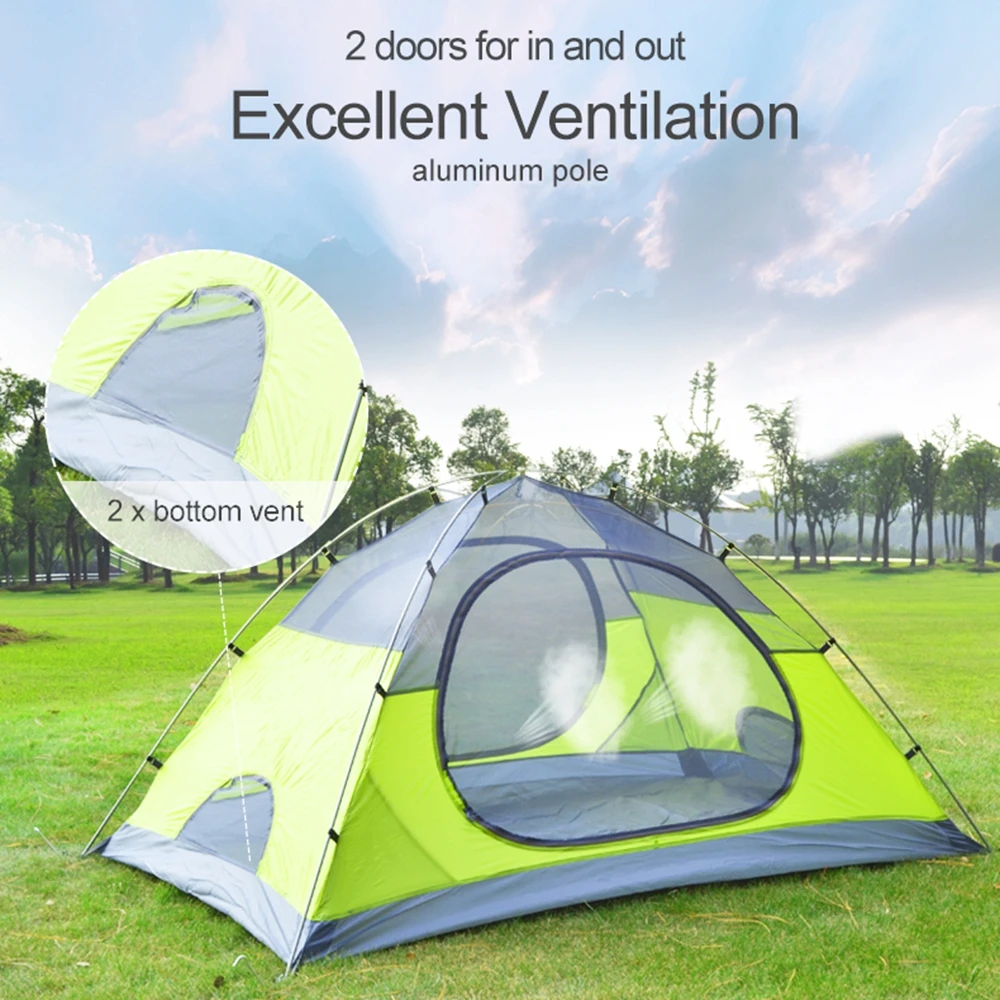
Understanding the benefits waterproofing outdoor gear provides helps explain why serious adventurers often invest in specialized fabric constructions for specific activities and conditions.
VI. Seam Sealing: The Critical Waterproofing Component
Even fabrics with exceptional waterproof ratings will fail if their seams allow water to penetrate. Every stitch creates tiny holes in the waterproof membrane—thousands of potential entry points for moisture. Proper seam sealing is therefore just as important as the waterproof rating itself.
Most quality gear employs one of these seam-sealing approaches:
Fully Taped Seams: Waterproof tape is heat-applied to cover all seams throughout the product. This is the gold standard for waterproofing and necessary for any gear expected to handle sustained precipitation. Look for this feature in rain jackets and tents for serious wet-weather backpacking.
Critically Taped Seams: Only the most vulnerable seams (typically shoulders, hood, and upper body on jackets; or the fly and floor on tents) receive waterproof tape. This reduces cost and improves breathability but leaves some seams vulnerable. It’s generally acceptable only for moderate conditions or budget-conscious gear.
Welded Seams: Advanced technique that uses ultrasonic welding or adhesives instead of stitching, eliminating needle holes entirely. This creates extremely waterproof junctions but adds significant cost. You’ll find this on premium expedition gear.
To inspect seam sealing, look for a clear or matching-color tape covering the interior side of seams. Quality sealing appears uniform without bubbles, gaps, or peeling edges. Over time, seam tape can degrade—watch for separation, cracking, or peeling as signals that your gear needs maintenance or replacement.
For complete protection in challenging environments, waterproof backpacking tent options with fully-taped seams provide reliable shelter when nature unleashes its full fury.
VII. DWR Coatings: The First Line of Defense
Durable Water Repellent (DWR) coating serves as the unsung hero of waterproof gear performance. This thin chemical treatment doesn’t make fabric waterproof by itself but dramatically improves how waterproof-breathable fabrics perform in real-world conditions. Applied to the outermost layer, DWR creates a microscopic bristle-like surface that causes water to bead up and roll off rather than saturate the exterior fabric.
Without effective DWR, the face fabric becomes saturated or “wets out” even when the waterproof membrane beneath continues blocking water. This creates several problems: the gear becomes heavier, it feels clammy against the skin, and—most critically—breathability significantly decreases. When the outer fabric is soaked, water vapor from your body can no longer effectively escape, creating that unpleasant sauna effect inside your supposedly breathable rain gear.
Unfortunately, DWR isn’t permanent. Regular use, abrasion, dirt, body oils, and repeated washing gradually degrade its effectiveness. Most backpackers notice their once-impressive rain jacket starting to absorb water after 5-20 days of field use, depending on conditions and treatment quality. When water no longer beads on the surface but instead darkens the fabric as it absorbs, that’s a clear sign your DWR needs rejuvenation.
For detailed information on various protective equipment, explore our collection of essential waterproof gear backpackers rely on for maintaining dry comfort in challenging environments.
VIII. Breathability Ratings: The Comfort Factor for Active Backpackers
Waterproof gear faces a fundamental challenge: keeping water out while letting water vapor (from sweat) escape. Without adequate breathability, even the most waterproof jacket becomes an uncomfortable personal sauna during activity. This explains why trash bags, despite being completely waterproof, make terrible rain gear for hiking.
Two primary systems measure breathability in outdoor gear:
Moisture Vapor Transmission Rate (MVTR) – Measured in grams per square meter per 24 hours (g/m²/24hr), this indicates how much water vapor passes through a square meter of fabric in a day. Higher numbers mean better breathability:
* 5,000-10,000 g/m²/24hr: Basic breathability, suitable for moderate activity
* 10,000-15,000 g/m²/24hr: Good breathability for most backpacking
* 15,000-20,000+ g/m²/24hr: Excellent breathability for high-output activities
Resistance to Evaporative Transfer (RET) – This European system measures resistance to moisture transfer, with lower numbers indicating better breathability:
* RET <6: Extremely breathable (excellent for high exertion)
* RET 6-13: Very breathable (suitable for most backpacking)
* RET 13-20: Satisfactory breathability (adequate for moderate activity)
* RET >20: Poor breathability (uncomfortable during exertion)
The central challenge in waterproof gear design is that improvements in waterproofing typically reduce breathability and vice versa. This explains why ultralight rain jackets with moderate waterproofing often breathe better than their more waterproof counterparts. For active backpacking, finding the right balance is essential.
For extended trips where weight is crucial but protection remains important, ultralight backpacking tent options provide an optimal balance of weather resistance and packability.
IX. Gear-Specific Waterproofing Considerations
Different backpacking equipment faces unique waterproofing challenges based on its function and exposure:
Rain Jackets & Pants
These garments experience highly variable pressure points as you move. Shoulders beneath backpack straps, forearms that brush against wet vegetation, and knees during crouching all experience substantially more water pressure than static fabric panels. Quality rain wear uses reinforced fabrics with higher waterproof ratings at these high-pressure zones. Additionally, fully-adjustable hoods, cuffs, and hems create critical barriers against driving rain that might otherwise enter through openings.
Tents & Shelters
Tents require different waterproof ratings for different components. Flysheets need moderate waterproofing (1,500-3,000mm) but benefit more from proper tensioning and design that prevents contact with the inner canopy. Tent floors, however, face constant pressure when you kneel, sit, or lie down, forcing water through the fabric—thus requiring much higher ratings (3,000-10,000mm). Single-wall tents must balance waterproofing with breathability to minimize condensation, while double-wall designs separate these functions between layers.
Backpacks
Most packs aren’t fully waterproof by design but use water-resistant materials (800-1,500mm) with DWR treatment. Critical contents typically require additional protection through internal dry bags or pack liners. Some specialized backpacks use highly waterproof roll-top designs or incorporate seam-sealed compartments for electronics and essentials.
Footwear
Waterproof hiking footwear usually employs membranes (like Gore-Tex) with ratings of 10,000-28,000mm. However, ankle openings remain vulnerable entry points, and no waterproof boot stays dry indefinitely in sustained wet conditions. Setting appropriate expectations—water-resistant rather than permanently waterproof—leads to better gear decisions.
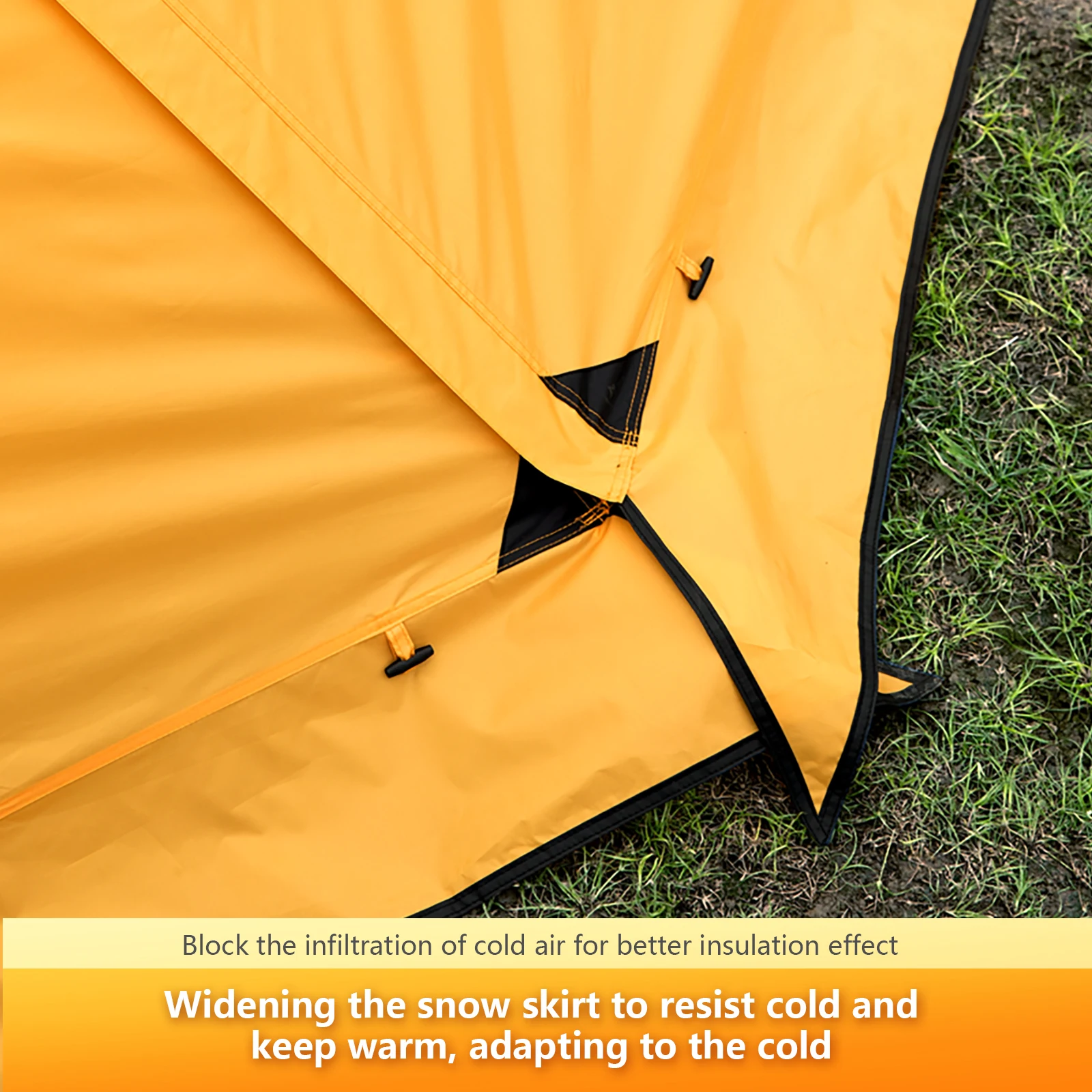
For extreme environments where standard waterproofing would fail, winter camping tent designs incorporate specialized materials and construction to withstand snow loads and freezing conditions.
X. Maintaining Waterproof Performance Over Time
Even the highest-rated waterproof gear requires proper maintenance to retain its performance. Follow these essential care practices:
Regular Cleaning
* Remove dirt, oils, and contaminants that degrade waterproofing
* Use technical cleaners specifically designed for waterproof gear (regular detergents can damage DWR and membranes)
* Rinse thoroughly to remove all soap residue
* Clean gear after extended trips or 5-7 days of field use
DWR Restoration
* Apply spray-on treatments to the exterior face fabric when water no longer beads up
* Use wash-in treatments for more uniform coverage but potentially reduced breathability
* Always apply to clean gear for maximum effectiveness
* Some treatments require heat activation with a clothes dryer on low setting
Proper Storage
* Store clean, completely dry gear in cool, dark locations
* Avoid compression for extended periods
* Keep away from heat sources and UV exposure when not in use
* Never store gear that’s even slightly damp, as mold quickly damages waterproof coatings
Repair and Replacement
* Small holes or tears can be fixed with seam sealer or repair patches
* Replace gear when waterproofing fails despite proper maintenance
* Most waterproof gear has a functional lifespan of 3-7 years with regular use
For detailed instructions on extending your equipment’s waterproof lifespan, our maintaining waterproof gear care guide provides step-by-step techniques for each gear type.
XI. Common Misconceptions About Waterproof Gear
Myth: “100% Waterproof Forever” is achievable
Reality: No gear remains absolutely waterproof indefinitely. Environmental exposure, body oils, abrasion, and regular use gradually degrade waterproofing. Even the best gear has pressure limits and eventually requires maintenance or replacement.
Myth: Higher waterproof ratings are always better
Reality: Extremely high ratings often come with trade-offs in breathability, weight, and flexibility. A 30,000mm jacket may be less comfortable and practical for moderate hiking than a more breathable 15,000mm option. Match ratings to your actual needs rather than automatically choosing the highest number.
Myth: Waterproof and breathable perform equally well together
Reality: There’s an inherent tension between these properties. While technology continues improving, physics creates fundamental limitations. The most waterproof options typically breathe less well, and the most breathable options usually have lower waterproof ratings. Finding your ideal balance is key.
Myth: Waterproof standards are consistent across brands
Reality: Testing methodologies vary between manufacturers, and some brands test under different conditions or pressures. A 10,000mm rating from one company might perform differently than the same rating from another. Trusted brands with transparent testing typically provide more reliable ratings.
For practical advice on staying dry regardless of gear limitations, our rainy backpacking staying dry guide offers field-tested techniques that complement your equipment’s technical capabilities.
XII. How to Evaluate Waterproof Claims When Shopping
Use this checklist to assess waterproof gear claims before purchasing:
Look Beyond the Number
* Check for detailed construction specifications (2L, 2.5L, 3L)
* Verify seam treatment (fully-taped, critically-taped, or welded)
* Examine zipper protection (storm flaps, waterproof zippers, or both)
* Assess adjustable features that prevent water entry (cuffs, hems, hoods)
Match to Your Needs
* Consider your typical activities and exertion level
* Account for your usual climate and weather patterns
* Be realistic about how you’ll actually use the gear
* Balance waterproofing with weight and packability requirements
Assess Value Signals
* Look for specific membrane technology rather than generic “waterproof material”
* Check warranty terms related to waterproofing performance
* Research if the manufacturer publishes testing methodology
* Be skeptical of unusually low prices for supposedly high-performance ratings
Research Real-World Performance
* Read reviews specifically mentioning use in heavy rain
* Look for long-term reviews (6+ months of use) that assess durability
* Pay attention to mentions of wetting out or leaking at pressure points
* Consider the reviewing source’s expertise and testing methodology
For equipment proven to withstand challenging environments, our collection of heavy duty 4 season tent options provides reliable protection when waterproof performance cannot be compromised.
Lightweight Backpacking Tent, Ultralight Backpacking Tent, Ultralight Bivy Tent
Ultralight Single Person Camping Tent with Aluminum Poles for 3-Season Backpacking Waterproof DesignPrice range: $94.88 through $326.82 Select options This product has multiple variants. The options may be chosen on the product pageLightweight Backpacking Tent, Ultralight Backpacking Tent, Waterproof Backpacking Tent
$391.05 Select options This product has multiple variants. The options may be chosen on the product pageHeavy Duty 4 Season Tent, Mountaineering Tent, Winter Camping Tent
$870.40 Select options This product has multiple variants. The options may be chosen on the product pageUltralight Backpacking Tent, Ultralight Dome Tent, Winter Camping Tent
Price range: $369.63 through $370.07 Select options This product has multiple variants. The options may be chosen on the product pageHeavy Duty 4 Season Tent, Ultralight Freestanding Tent, Winter Camping Tent
$3,722.66 Select options This product has multiple variants. The options may be chosen on the product pageUltralight Backpacking Tent, Ultralight Trekking Pole Tent
Price range: $350.87 through $351.98 Select options This product has multiple variants. The options may be chosen on the product page
XIII. When Waterproofing Isn’t Enough: Supplementary Protection Strategies
Even with excellent waterproof gear, smart backpackers implement layered protection strategies for critical items:
Internal Waterproofing Systems
* Use roll-top dry bags for sleeping bags and insulation layers
* Line backpacks with contractor-grade trash compactor bags
* Store electronics and documents in waterproof cases or zip-lock bags
* Pack especially vulnerable items in multiple waterproof layers
Smart Campsite Selection and Management
* Choose naturally protected campsites away from water runoff paths
* Create drainage channels around tents in heavy rain
* Position tent doors away from prevailing wind direction
* Use natural windbreaks to reduce rain pressure on tent walls
Condensation Management
* Ventilate shelters even during rain to reduce internal moisture buildup
* Avoid cooking inside tents, which creates significant vapor
* Keep wet gear in vestibules rather than inside sleeping areas
* Use absorbent camp towels to manage unavoidable moisture
These field-tested strategies complement your gear’s built-in protection, creating a comprehensive system for staying dry in challenging conditions, as outlined in our ultimate guide weatherproof gear backpacking resource.
XIV. Is 100% Waterproof Gear Worth the Investment?
When premium waterproofing justifies the cost:
For multi-day trips in notoriously wet regions like the Pacific Northwest, New Zealand, or Scotland, investing in higher waterproof ratings significantly enhances comfort and safety. Similarly, if you regularly backpack during shoulder seasons when sustained precipitation is likely, premium waterproofing prevents the misery and potential danger of wet insulation. These scenarios justify the additional expense of high-performance rain gear and shelters.
When moderate protection suffices:
If you primarily hike in arid regions with occasional afternoon thunderstorms, or you can usually plan around weather windows, moderate waterproofing (10,000-15,000mm) typically provides adequate protection at a more reasonable price point. Fair-weather backpackers might prioritize weight savings and breathability over extreme waterproofing.
Weight and packability considerations:
Highly waterproof gear often (though not always) weighs more and packs larger than less waterproof alternatives. A 20,000mm waterproof jacket might weigh 16-20 ounces, while a 10,000mm jacket could weigh just 9-12 ounces. On trips where every ounce matters, this difference becomes significant, especially when multiplied across several gear items.
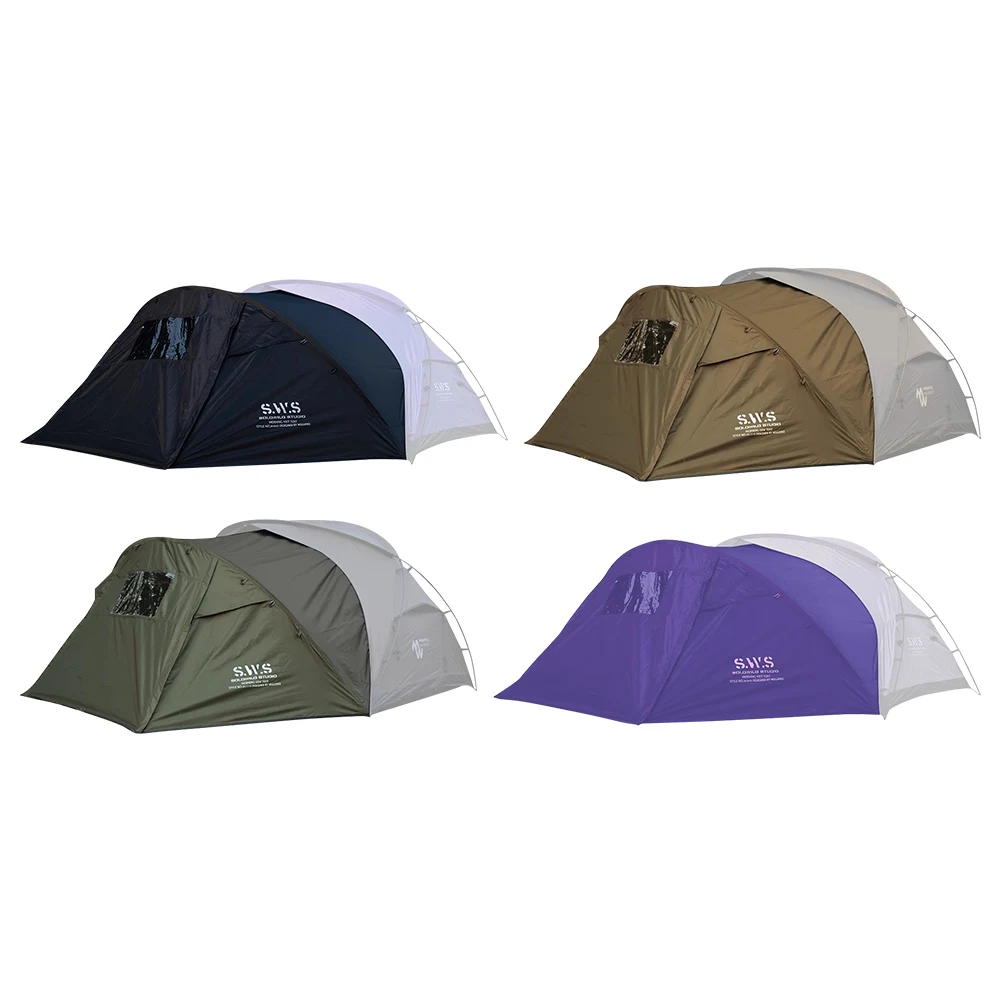
For convenient protection that balances performance with ease of use, waterproof pop up tent designs offer reliable shelter with minimal setup time.
XV. Final Thoughts: Finding Your Waterproof Sweet Spot
The perfect waterproof gear for your adventures lies at the intersection of expected conditions, activity level, and personal preferences. Rather than seeking the highest possible ratings across all equipment, focus on strategic waterproofing—higher ratings where they matter most (tent floors, shoulder areas on jackets) and moderate ratings where breathability and weight savings provide greater benefits.
Remember that waterproofing is ultimately a system, not just a number. A well-designed 10,000mm rain jacket with excellent DWR treatment, fully-taped seams, and thoughtful hood design will keep you drier than a poorly designed 20,000mm jacket lacking these features. At Explore Elements, we believe in matching specifications to real-world performance, ensuring you have the right protection for your specific adventure needs without carrying unnecessary weight or complexity.

